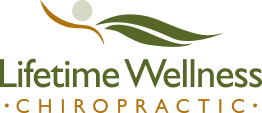
How Safe is Your Sunscreen?
Since summer has finally arrived, it is important that we protect one of our most valuable organs, our skin. The sunshine is finally here! It’s now time to stock up on sunscreen. I thought it would be of great importance to my readers that I share this wonderful article on the safety of today’s sunscreens. Enjoy!
Should people in the Northwest be concerned about sun exposure?
According Dr. Somol, here in the cloudy Northwest, the rate of melanoma is actually higher than the national average. Cumulative sun exposure is the biggest contributing factor in the development of skin cancer, but other factors can come into play as well. Dr. Somol explains that behaviors that create free radicals in the body and promote oxidative stress – such as poor diet, low activity or smoking – can make you more susceptible to damage from the sun. Use of tanning beds, especially before the age of 35, can increase your skin-cancer risk later in life by 250 percent. On the other hand, a diet rich in antioxidants – including plenty of colorful fruits and vegetables – can help you lower your risk of skin cancer. “Eating a diet high in orange and red carotenoids seems to be protective against skin cancer,” notes Dr. Somol.
Does sunscreen reduce cancer risk?
Using sun protection is crucial for reducing the risk of certain skin cancers, but Dr. Somol recommends reading ingredient labels carefully when choosing a product. “Some sunscreens may actually promote the development of cancer because they contain chemicals that lead to increased free radicals,” she reports. The most common culprit is oxybenzone, found in roughly 42 percent of sunscreens. Oxybenzone causes allergic skin reactions and hormone disruption and is likely to actually increase your risk of skin cancer. (Consult the table below for other common sunscreen ingredients to avoid.)
Which sunscreen ingredients are safer?
Seek out sunscreens that include zinc oxide or titanium dioxide. Products containing zinc oxide and titanium dioxide provide about 20 percent better UV protection than other sunscreens. Plus, products with these safer ingredients generally contain fewer of the harmful ingredients listed in the table. Zinc oxide and titanium dioxide are now available in nanoparticle form and these products will protect your skin without the telltale opaque white appearance. Dr. Somol is careful to note however, that consumers should avoid aerosol versions of zinc and titanium products because they can be harmful if inhaled. The Environmental Working Group (EWG) provides a vast and detailed database of sunscreen ratings on its website: www.ewg.org.
How can you stay vigilant against skin cancer?
Monitor your own skin for changes and make sure your annual medical exam includes a check for skin changes. Make an appointment with a naturopathic physician.
Ingredient Risk Other Information:
Oxybenzone:
Hormone disruptor. Releases reactive oxygen (may cause cancer). Allergic reactions. Estrogen-like effects. 9% (significant amount) absorbed into bloodstream. Found in 42% of sunscreens.
Octonoxate:
(Octyl methyoxy-cinnamate) Estrogen-like effects. Disrupts thyroid activity and brain signaling in animal testing. Easily absorbed into the skin most commonly used ingredient. Hypoallergenic.
Homosalate:
Forms toxic byproducts. Weak hormone disruptor.
Ensulizole:
(Phenyl-benzimidazole sulfonic acid) Causes formation of free radicals (may cause cancer).
Padamate O (octyl dimethyl):
Causes formation of free radicals (may cause cancer). Allergic reactions. Estrogen-like effects.
Methyl anthranilate:
Unstable when exposed to sunlight. Causes formation of free radicals (may cause cancer). Banned in Europe.
Heather Denniston, D.C.
Source: Environmental Working Group
